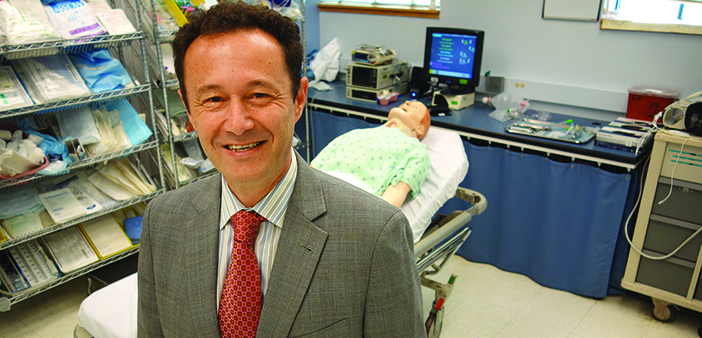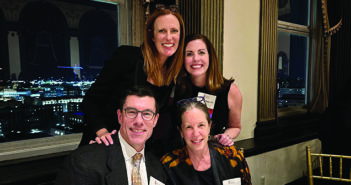Conference brings disaster planners to Brown.
On June 23, 2014, a patient walked into the emergency room of Phebe Hospital in Bong County, Liberia, suffering from vomiting, nausea, and diarrhea. Within a week, the patient and six of the nurses who cared for the patient were dead.
This was the first case of Ebola in Bong County, though the epidemic had begun in nearby Guinea several months before. The outbreak eventually killed nearly 30,000 people, including almost 10 percent of the health care workforce in West Africa.
But the virus did not spread throughout Nigeria, thanks to Ameyo Stella Adadevoh, MD. When a patient with Ebola symptoms arrived at First Consultant Hospital in Lagos, Adadevoh recognized the symptoms and immediately quarantined the patient. Adadevoh contracted Ebola from the patient and died, but she prevented the virus from spreading.
Adam C. Levine, MD, associate professor of emergency medicine, presented this “tale of two countries” at the third annual New England Society of Disaster Medicine conference at the Warren Alpert Medical School in December. “The foremost line of defense against an epidemic is having a well-trained health force able to recognize these diseases,” Levine says.
The New England Society of Disaster Medicine is a collaboration among the disaster medicine programs at Brown, Harvard, Beth Israel Deaconess Medical Center, and the University of Massachusetts Medical School. It expanded in 2016 to include Massachusetts General Hospital.
Selim Suner ’86 ScM’87 MD’92 RES’96, a professor of emergency medicine, surgery, and engineering, cofounded the society about three years ago. “Disaster medicine has been around for 20 or 30 years, but bringing disaster medicine into the academic fold is something new,” he says.
Doctors at the conference discussed how to prepare for all types of disasters: infectious disease outbreaks, mass casualty events, natural disasters, and even power outages. “You prepare your [hospital]system for anything that can happen,” Suner says. “It’s all-hazards preparedness.”
At Brown, residents and fellows in the emergency medicine program participate in trauma simulations at the Lifespan Medical Simulation Center every month and disaster simulations two to three times a year. “You want [physicians]to fail in a controlled environment because that’s the best way to learn,” Suner says.
Paul Biddinger, MD, is the director of the Center for Disaster Medicine at MGH and an assistant professor of emergency medicine at Harvard Medical School and the Harvard T.H. Chan School of Public Health. He’s also the chief of the hospital’s division of emergency preparedness.
Biddinger runs Ebola outbreak simulations at MGH and other disaster simulations at Harvard’s Center for Medical Simulation. The point of disaster medicine is “not to think about what a disaster should look like, but to learn what they really look like,” he says.
Because of the simulations, doctors at MGH were prepared to respond to the Boston Marathon bombing in 2013, Biddinger adds.
Nevertheless, emergency preparedness funding is not always available.
John Foggle, MD, MBA, a clinical associate professor of emergency medicine at the Warren Alpert Medical School, designs the curriculum at the Lifespan Medical Simulation Center. He says “disaster amnesia” is a big problem. “The minute nothing is happening, the money dries up,” Foggle says.
Suner’s goal is to make federal emergency preparedness funding available “at an even keel throughout time.”
“Preparedness doesn’t happen in a vacuum,” he says. “You have to continually exercise your plans.”




